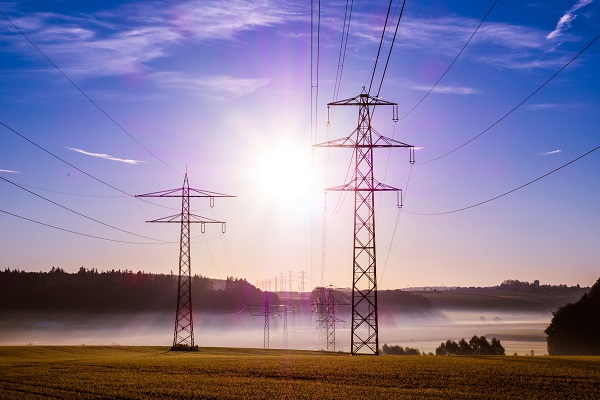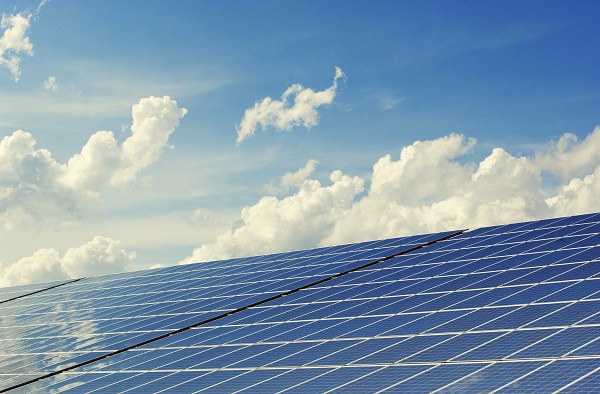Classification:Jiangsu Neusoft
Release Date:2021-10-23 16:19
Views
Energy is an important material basis for human survival and development, and a pillar of national economic development. Building a clean, low-carbon, safe and efficient energy system is an important guarantee for achieving high-quality economic and social development in China.

At present, a new round of energy revolution is booming, and a clean, low-carbon, safe and efficient energy system is gradually taking shape. From a technological gap to the world, China's energy technology field is gradually changing from a "catcher" to a "leader", and the future development also contains unlimited potential.
The report "China’s 14th Five-Year Plan Energy Demand Forecast and Outlook" shows that the "14th Five-Year Plan" period is the first "five years" after China’s efforts to achieve the goal of carbon neutrality by 2060. The safety of China’s energy system The clean, low-carbon and efficient transformation will be further strengthened, and the smart energy industry is expected to become an important economic growth point.
"Dual carbon" has become a key word for China's economic and social development
On September 22, 2020, China proposed at the United Nations General Assembly that China’s carbon dioxide emissions will strive to reach a peak before 2030 and strive to achieve “carbon neutrality” by 2060. Since then, "carbon peak" and "carbon neutral" have become keywords for China's economic and social development.
Judging from the relevant opinions on carbon peaking, carbon neutrality (hereinafter referred to as "dual carbon") and industry and regional plans announced one after another, energy conservation and emission reduction will become an important track under the "dual carbon" goal, and new energy markets such as photovoltaics This will also open up a wider space. However, for related companies, how to seize the industrial opportunities brought by the "dual carbon" goal and create new economic growth points is also a new challenge.
At present, under the carbon peak and carbon neutral strategy, people’s attention to the new energy industry continues to rise, and as an important part of the new energy PV industry also attracted much attention.
According to the electricity data released by the National Energy Administration, China's newly installed photovoltaic capacity will reach 48.2GW in 2020, a significant increase of nearly 60% compared to 2019.
According to calculations, PV the carbon dioxide emissions of China are 33-50 g/kWh, while coal-fired power is 796.7 g/kWh. The carbon dioxide emissions of photovoltaic power generation are only one-tenth to one-twentieth that of fossil energy, and it has an overwhelming advantage in reducing carbon emissions. It can be seen that if the proportion of clean and renewable energy can be increased on the power generation side, the carbon emissions per kilowatt-hour of electricity can be reduced overall. More importantly, this model does not need to compress and restrict social electricity consumption, but uses technological means to break through the impact of traditional economic models on the environment, opening up a new growth space for social and economic development.
According to the "China Photovoltaic Industry Cleaner Production Research Report" issued by the Renewable Energy Professional Committee of the China Association for Comprehensive Utilization of Resources and the international environmental protection organization Greenpeace, the energy recovery cycle of photovoltaic power generation is only 1.3 years, and its service life is 25 years, which is It is said that photovoltaic power generation has zero carbon emissions in about 24 years.

Low-carbon environmental protection promotes the sustainable development of the industry
The national "14th Five-Year Plan" outline proposes to improve the dual control system of total energy consumption and intensity, and implement a system with carbon intensity control as the main and total carbon emission control as a supplement. This marks that China will begin to enter a new development stage of dual control of carbon emission intensity and total amount.
In recent years, China has implemented pollution prevention and control battles, focusing on optimizing energy and industrial structure, focusing on energy conservation and emission reduction, and continuously improving the quality of the ecological environment. Not long ago, the world's largest carbon emissions trading market was officially launched in China. Building a national carbon market is a major institutional innovation to use market mechanisms to control and reduce greenhouse gas emissions and promote green and low-carbon development. It is also an important policy tool to promote the achievement of carbon peak goals and carbon neutrality vision.
With the gradual deepening of the concept of green development and the implementation of the national dual-control policy, more and more companies have begun to pay attention to low-carbon industries, through energy-saving transformation, technological progress, and investment in new projects for green transformation and upgrading to form new competitiveness.
As a representative of the green environmental protection industry, the photovoltaic industry, guided by the concept of green development, continues to devote itself to innovations in technology, performance, and products. It not only helps customers achieve the goal of "low carbon" or "zero carbon" through products, but also itself It has been experimenting with the use of low energy consumption and low carbon emission materials and continuously optimizing the production mode, driving economic transformation in an all-round way, and promoting the sustainable development of the entire industry.






 Wechat
Wechat
 Tik Tok
Tik Tok